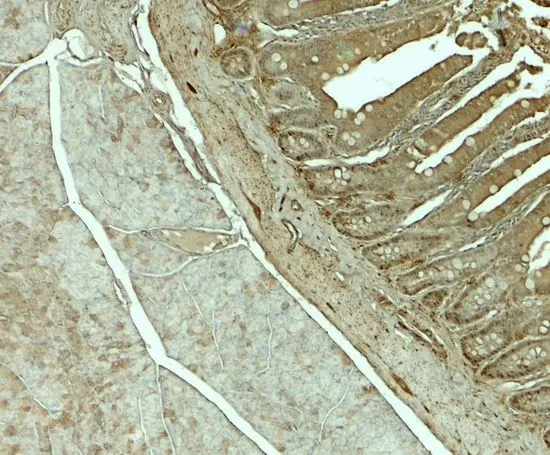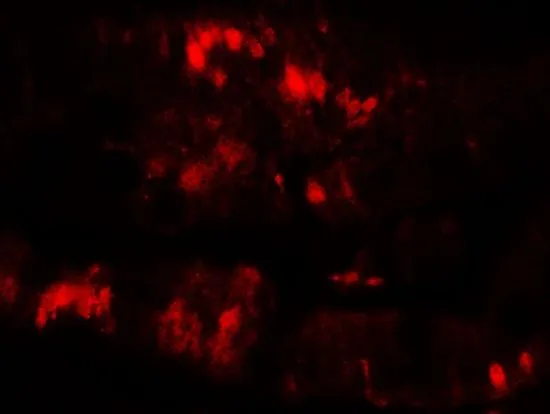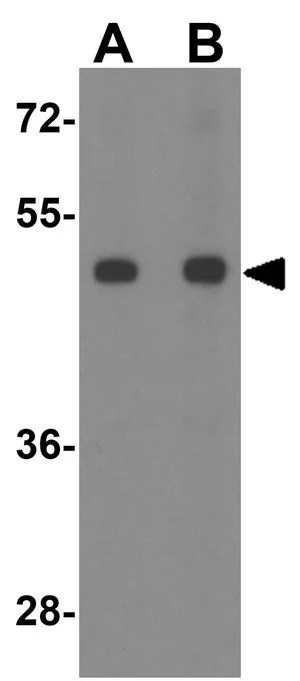
IHC-P analysis of rat colon tissue using GTX32151 SLC29A3 antibody. Working concentration : 5 microg/ml
SLC29A3 antibody
GTX32151
ApplicationsWestern Blot, ELISA, ImmunoHistoChemistry, ImmunoHistoChemistry Paraffin
Product group Antibodies
ReactivityHuman, Mouse, Rat
TargetSLC29A3
Overview
- SupplierGeneTex
- Product NameSLC29A3 antibody
- Delivery Days Customer9
- Antibody SpecificityAt least two isoforms of SLC29A3 are known to exist; this antibody will detect both isoforms. SLC29A3 antibody is predicted to not cross-react with other SLC29 proteins.
- Application Supplier NoteWB: 1 - 2 microg/mL. IHC-P: 5 microg/mL. *Optimal dilutions/concentrations should be determined by the researcher.Not tested in other applications.
- ApplicationsWestern Blot, ELISA, ImmunoHistoChemistry, ImmunoHistoChemistry Paraffin
- CertificationResearch Use Only
- ClonalityPolyclonal
- Concentration1 mg/ml
- ConjugateUnconjugated
- Gene ID55315
- Target nameSLC29A3
- Target descriptionsolute carrier family 29 member 3
- Target synonymsENT3; equilibrative nucleoside transporter 3; HCLAP; HJCD; PHID; solute carrier family 29 (equilibrative nucleoside transporter), member 3; solute carrier family 29 (nucleoside transporters), member 3
- HostRabbit
- IsotypeIgG
- Protein IDQ9BZD2
- Protein NameEquilibrative nucleoside transporter 3
- Scientific DescriptionThis gene encodes a nucleoside transporter. The encoded protein plays a role in cellular uptake of nucleosides, nucleobases, and their related analogs. Mutations in this gene have been associated with H syndrome, which is characterized by cutaneous hyperpigmentation and hypertrichosis, hepatosplenomegaly, heart anomalies, and hypogonadism. A related disorder, PHID (pigmented hypertrichosis with insulin-dependent diabetes mellitus), has also been associated with mutations at this locus. Alternatively spliced transcript variants have been described.[provided by RefSeq, Mar 2010]
- ReactivityHuman, Mouse, Rat
- Storage Instruction-20°C or -80°C,2°C to 8°C
- UNSPSC12352203


